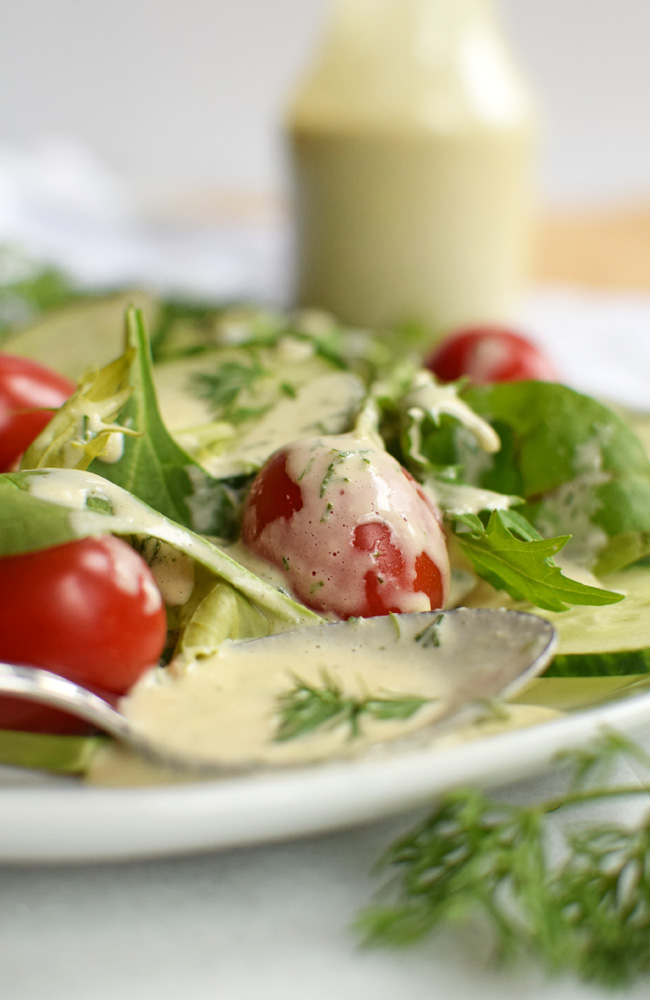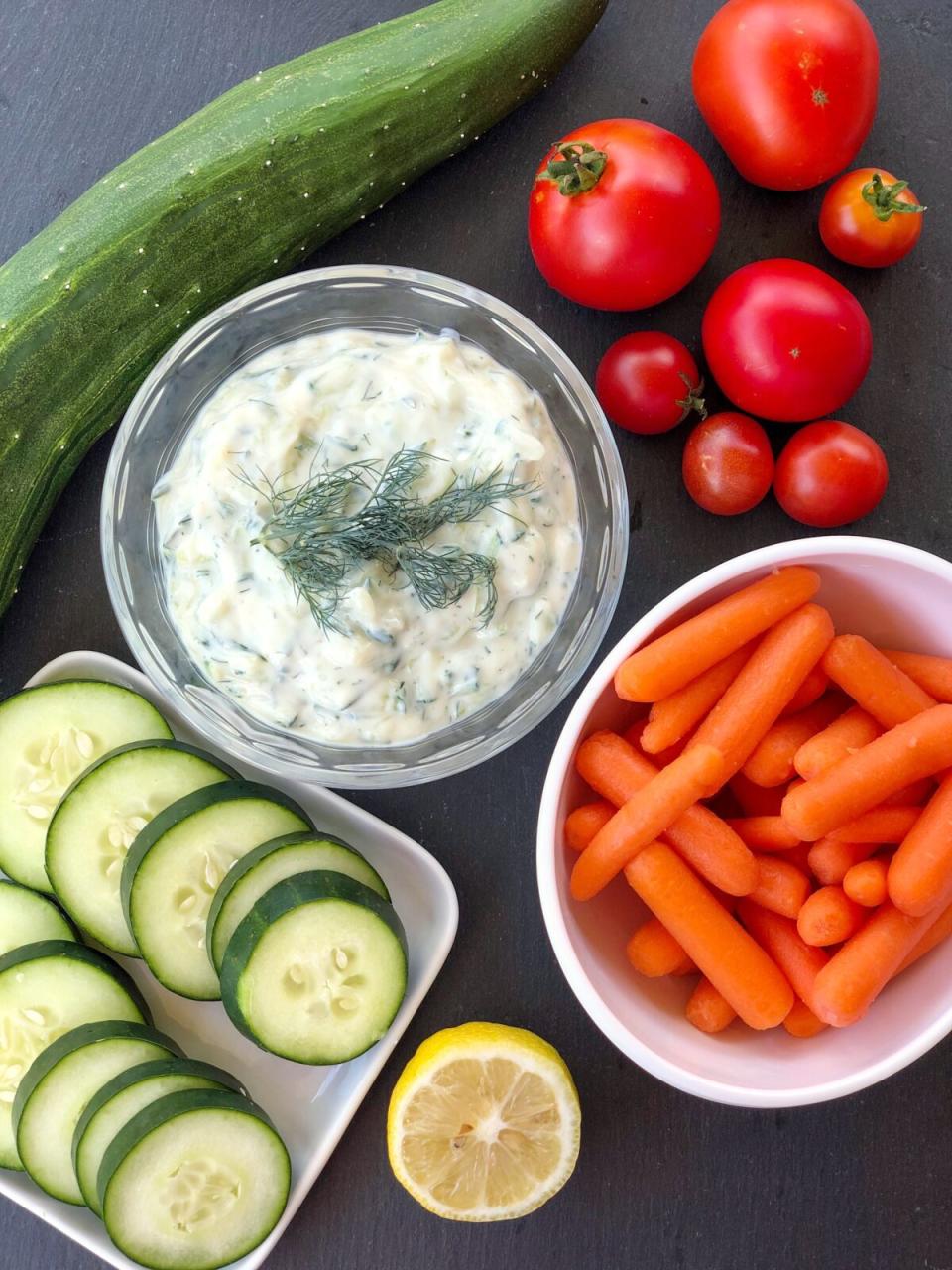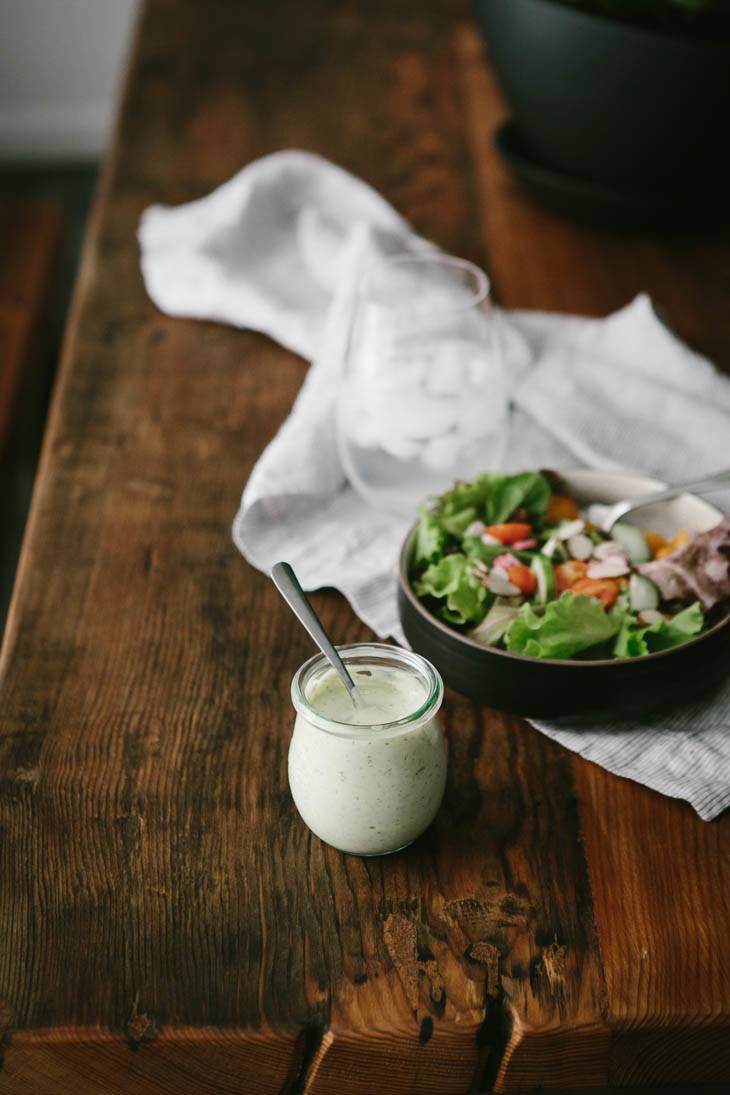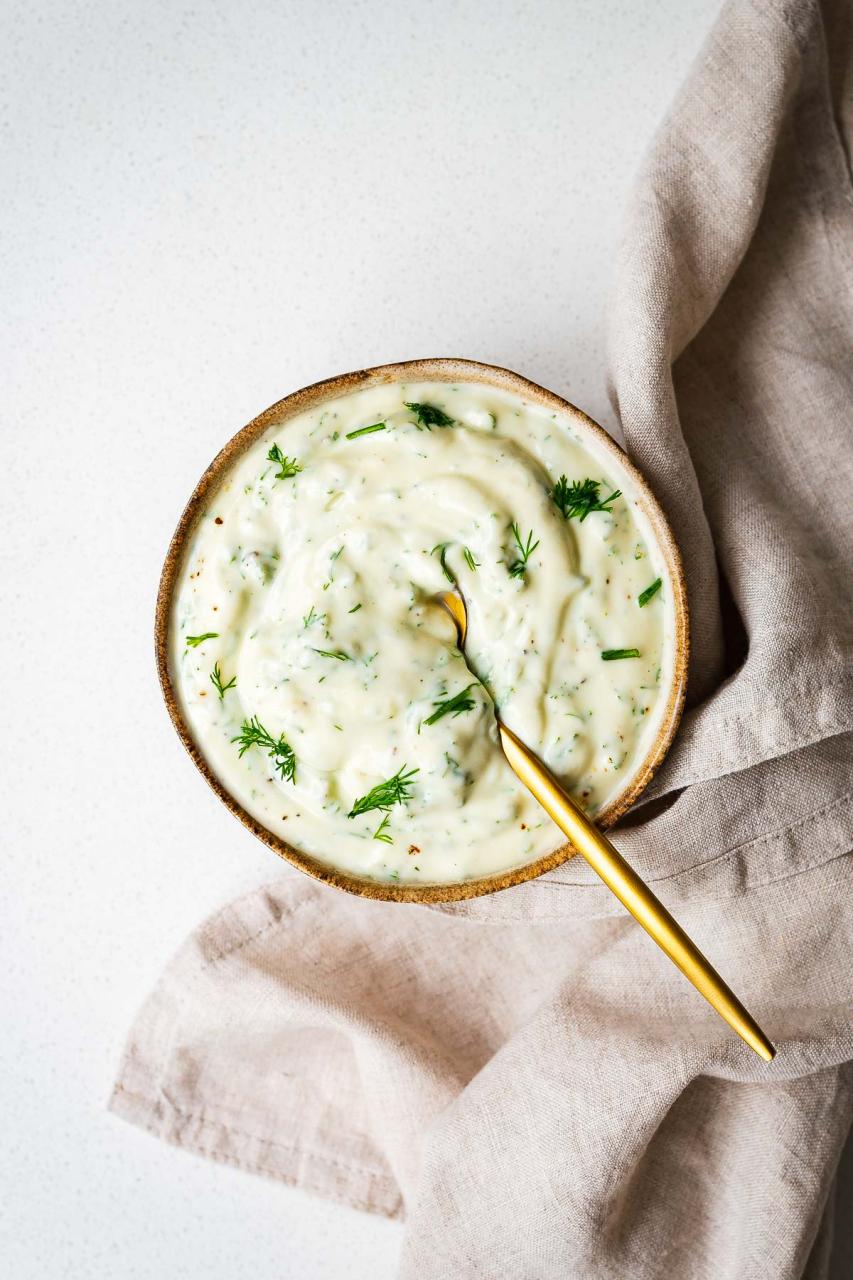Oil free Garlic dill sauce is a versatile condiment that can elevate the flavor profile of numerous dishes. Traditionally, the creation of such sauces may involve the use of oil as an emulsifier or flavor carrier. However, an oil-free version caters to those seeking healthier alternatives, those with dietary restrictions, or individuals aiming to reduce calorie intake.
The base of an oil-free garlic dill sauce typically depends on an alternative emulsifying ingredient or thickening agent to achieve a desirable texture. Options for such ingredients can include blended silken tofu, cashews that have been soaked and pureed, or even a starch-based thickener, such as arrowroot or cornstarch, mixed with a liquid like water or a non-dairy milk. The choice of base affects not only the texture but also the nutritional content and allergy considerations of the sauce.
Garlic and dill, the key components of the sauce, each bring their unique taste characteristics. Garlic, with its pungent and slightly spicy flavor, has been used in culinary traditions around the world and is revered both for its taste and numerous health benefits, such as its potential antibacterial and antioxidant properties. Dill, on the other hand, offers a sweet and grassy note with a hint of anise-like sharpness, which pairs excellently with the robust flavor of garlic.
Acidic components, such as lemon juice or vinegar, are often added to balance the sauce’s flavor by introducing a fresh, tangy dimension. Adjustments in seasoning, including salt, pepper, or even a touch of sweetness with a natural sweetener like agave, can be made to cater to individual palates.
An oil-free garlic dill sauce might be served alongside, drizzled over, or mixed into a variety of foods ranging from salad dressings and marinades to a dip for vegetables, sandwich spreads, or as a topping for grilled proteins.
Creating such a sauce involves finely mincing or crushing the garlic to ensure its flavor is well distributed throughout. Fresh dill is typically preferred for its more vibrant taste; it is finely chopped to release its essential oils. Blending or mixing the sauce ingredients thoroughly ensures a smooth and cohesive texture, and chilling the sauce before serving is recommended to allow the flavors to meld.
Oil free Garlic dill sauce recipe


Oil free Garlic dill sauce
Equipment
- 1 medium mixing bowl
Ingredients
- 3 large cloves garlic minced
- 1/3 cup hummus or store-bought
- 1 tsp dried dill or 2 tsp fresh dill
- 2 tbsp lemon juice
- Water to thin
Instructions
- Combine the hummus, dill, garlic, and lemon juice in a medium mixing bowl and whisking until smooth.
- 2 Add water little at a time to thin until sauce is pourable but not too runny. Taste and make adjustment to suit your taste.
Cooking Tips about Oil free Garlic dill sauce

Firstly, to compensate for the absence of oil, which often adds richness and mouthfeel to a sauce, we can employ alternative ingredients. Unsweetened and unflavored plant-based yogurt or silken tofu provides a creamy base without added oils. Pureed white beans are another healthful option that adds body and protein.
Secondly, to build depth of flavor, we can intensify the other ingredients. Start with fresh garlic for its pungent, zesty taste. Finely mince or use a garlic press to achieve a strong garlic flavor that will permeate the sauce. Similarly, fresh dill should be used if possible because it will add a bright, grassy note that dried dill cannot fully replicate. Finely chop the dill to distribute its flavor throughout the sauce.
Thirdly, adding an acidic component such as lemon juice or vinegar can brighten the flavor profile and bring a pleasant tang that makes up for the lack of oil. Lemon juice, in particular, works well with both garlic and dill, enhancing their flavors.
Fourthly, for seasoning, apart from traditional salt and pepper, you can consider adding Dijon mustard or capers which provide a piquant quality that boosts the overall flavor complexity. They carry the tanginess and add a subtle sharpness that complements the other ingredients well.
Lastly, to achieve a smooth consistency, blending the base ingredients thoroughly is key. Using a high-speed blender will ensure that the garlic, plant-based yogurt or tofu, and any additional components are well-emulsified. The texture should be creamy but not overly thick. If the sauce is too dense, adjust by adding small amounts of water, plant-based milk, or lemon juice until the desired consistency is reached.
Serving suggestions about Oil free Garlic dill sauce

- Salad Dressing: Drizzle the garlic dill sauce over fresh garden salads, tomato cucumber salad, or use it to dress potato or pasta salads for a zesty kick.
- Dip: Serve it as a dip alongside fresh vegetables like carrots, celery sticks, cherry tomatoes, and broccoli for a healthy snack option. It’s also excellent with pita bread, crackers, or pretzels.
- Sandwich Spread: Use the sauce as a flavorful spread on sandwiches, wraps, or burgers in place of mayonnaise or mustard. It pairs well with vegan or plant-based patties, grilled vegetables, or traditional deli meat.
- Marinade: Utilize the garlic dill sauce as a marinade for tofu, tempeh, or mushrooms before grilling or roasting to infuse them with herby, garlicky notes.
- Topping for Grilled Foods: Drizzle it over grilled fish, chicken, or vegetable skewers for added moisture and a burst of flavor.
- Potato Dishes: Mix it into boiled or roasted potatoes, or use it as a topping for baked potatoes instead of sour cream.
- Rice and Grains: Stir the sauce into cooked rice, quinoa, or other grains to make a zesty side dish.
- Bowls: Spoon it over grain bowls, Buddha bowls, or nourish bowls that include a mix of grains, legumes, and veggies for a creamy element.
- Pasta: Toss it with warm or cold pasta dishes adding a fresh, creamy coating without the need for heavy cream or butter.
- Eggs: Serve it as an accompaniment to hard-boiled or poached eggs, or dollop on top of scrambled eggs or an omelette.
Top 5 FAQs about Oil free Garlic dill sauce

- What can I use as a base for an oil-free garlic dill sauce? To create the creamy texture usually provided by oil, you can use alternative bases such as blended silken tofu, pureed soaked cashews, pureed white beans, or even unsweetened and unflavored plant-based yogurt. These ingredients serve as healthier emulsifiers and thickeners for the condiment.
- How do you achieve a rich garlic flavor in the sauce without oil? For a strong garlic presence, start with fresh garlic and finely mince it or use a garlic press to ensure its flavor is well distributed throughout the sauce. You can also consider roasting the garlic for a sweeter, more mellow garlic flavor.
- Can I make this sauce ahead of time and store it? Yes, you can make oil-free garlic dill sauce in advance. However, keep in mind that without the preservative qualities of oil, it may not last as long. It’s best to store it in an airtight container in the refrigerator and use it within a few days for the best quality and flavor.
- Is oil-free garlic dill sauce suitable for all dietary needs? It can be very suitable for various dietary restrictions, especially when you choose the base carefully. For example, by using plant-based yogurt or tofu, you cater to vegan and dairy-free diets. Always check the specific needs, such as nut allergies if using cashews, and adjust your recipe accordingly.
- What dishes pair well with oil-free garlic dill sauce? This sauce pairs excellently with a range of dishes including salads, vegetable dips, sandwich spreads, grilled proteins, marinades, potato dishes, grains, pasta, and eggs. Its versatility makes it a fantastic addition to almost any meal looking for a creamy, garlicky, and herby component.
In conclusion, an oil-free garlic dill sauce offers a lighter, yet equally flavorful alternative to traditional oil-based condiments. By utilizing health-conscious base ingredients like silken tofu, pureed white beans, or plant-based yogurt, you achieve the desired creamy texture without compromising on taste or dietary preferences.
Leave a Reply